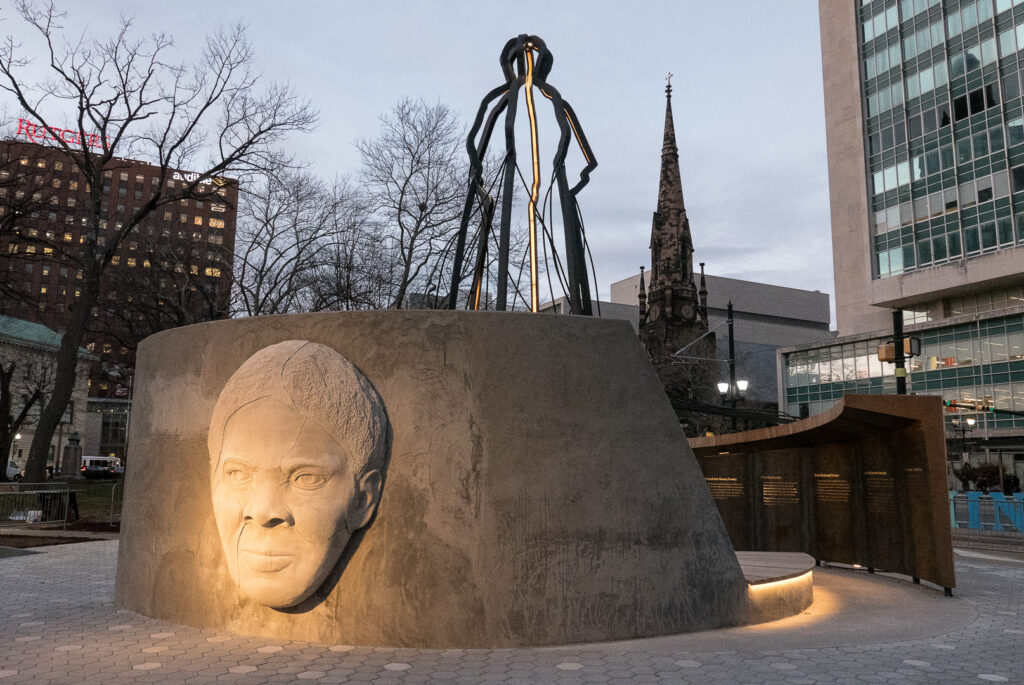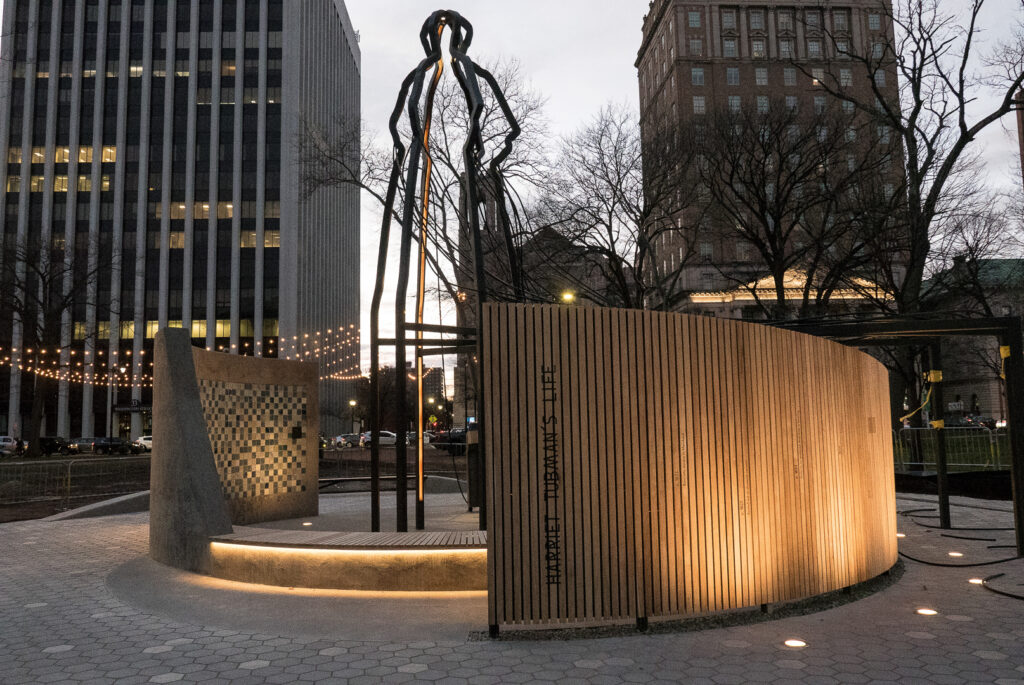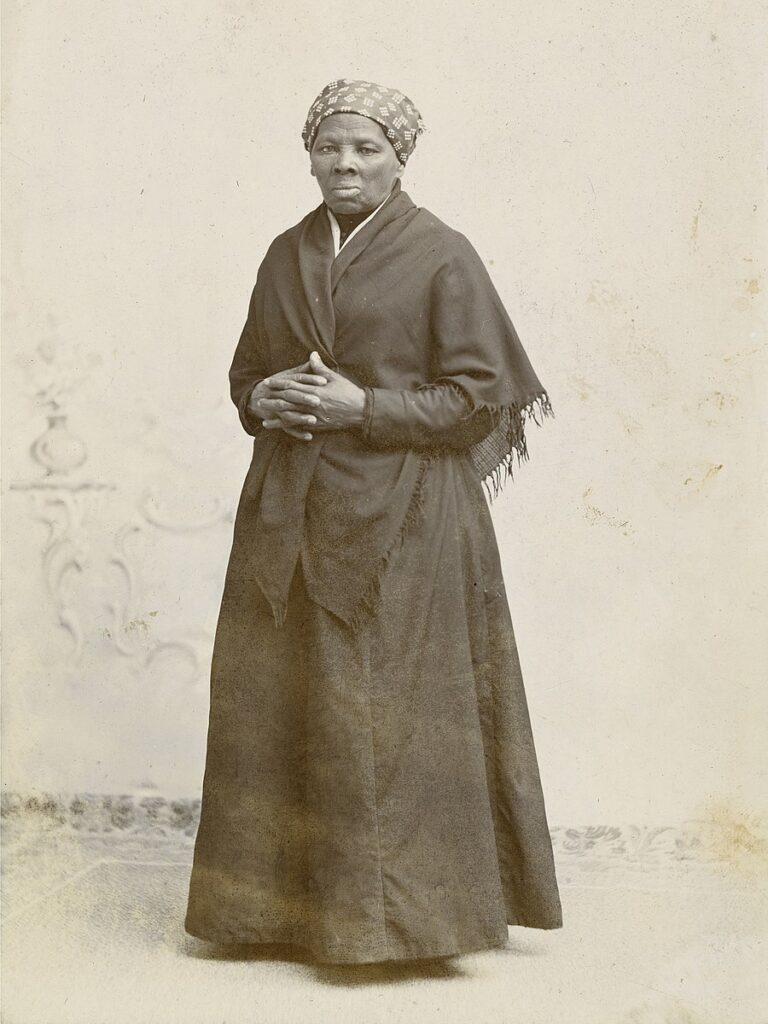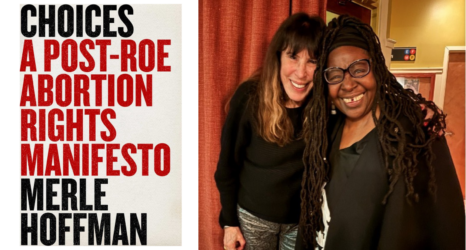Who is better than Harriet Tubman to move the U.S. forward during contentious times, as we face struggles over racial justice and gender equality?

Friday, March 10, is Harriet Tubman Day, which marks the 110th anniversary of Harriet Tubman’s passing on March 10, 1913. Last year, we celebrated Tubman’s bicentennial birthday with Ms. magazine’s Tubman 200 project. Today, we continue in the celebration of our Black feminist hero as we recognize the latest Harriet Tubman monument. Designed by artist Nina Cooke John, Shadow of a Face opened to the public yesterday in Newark, N.J., in Harriet Tubman Square, renamed from Washington Park on Juneteenth of 2022.
The new Harriet Tubman monument replaces a statue of Christopher Columbus, which was removed in 2020. Newark’s arts and cultural affairs director Fayemi Shakur said the city’s choice to replace a symbol of conquest with “an ideal figure for democracy and freedom” is part of a larger project of healing.
As a freedom fighter who self-liberated from slavery in Eastern Shore, Md.—before returning 13 times to rescue scores of family and friends still enslaved—who is better than Harriet Tubman to move us forward during contentious times as we face struggles over racial justice and gender equality?
“I think the new monument underscores the role that public art plays in our lives and in shaping identity and quality of life in our cities,” Shakur explains. “There is a need to diversify our public art collections, which, throughout the country, are prominently white men in stories of war. We can start to think about replacing those monuments with stories and figures that are more representative of the communities that we serve, and more reflective of who we are today, and more inclusive of women.”
Newark, which is a predominately Black and Brown community, is also an ideal location to model inclusive histories and heighten the visibility of Black feminist icons like Tubman.
“I think it’s always healing to be able to see yourself in public space and in the community around you,” Shakur said. “It’s important for our residents and our children to see these reflections as they go about their day.”
This reflexivity is the core of Cooke John’s monument to Harriet Tubman.
“She was this powerhouse of a woman wrapped in this tiny body,” Cooke John said of Tubman, who was only five feet tall. “I did want to have a figurative representation of her face because I was so struck when I visited Simone Leigh’s Brick House sculpture on the High Line years ago and saw my face represented in hers. I wanted the face to be recognized as your grandmother, your aunt, or some other authoritative figure who gives you guidance whenever you need it. The recognition in that face is not only in recognizing Harriet Tubman, but in recognizing wise older African American women whom we encounter all the time in our lives. There is specificity but also universality in the legacy of Harriet Tubman.”
Our public art collections … are prominently white men in stories of war. We can start to think about replacing those monuments with stories and figures that are more representative of the communities that we serve, and more reflective of who we are today, and more inclusive of women.
Fayemi Shakur, Newark’s arts and cultural affairs director

Cooke John focused on an abstract approach to Tubman’s multiplicity and complexity. The Horatio Seymour Squyer photograph of Tubman, wearing a headwrap and shawl, served as the basis for this artwork.

“I think people who are very familiar with her image will see that represented in the outline of her figure,” Cooke John explains. “I chose to create the outline, and then rotate it several times, in homage to the multiplicity of her character. I’m kind of duplicating it then triplicating it and turning it around so it’s facing in different directions. It’s interlocking and ultimately becomes the North Star in a way.”
The North Star was integral to Tubman’s self-emancipation story, as she used it as a compass in the dark of night when journeying north to freedom. Cooke John integrated imagery of the North Star into the lighting of the sculpture, and its interlocking circles represent cosmograms, African symbols of connection to ancestors. The design, which was intentional about engaging community and public spaces, was selected as part of an open call for submissions for a new monument.
“This monument wouldn’t just be a single statue that you walk around,” Cooke John said. “It’s something that you’re engaged with and walk in and through. I wanted people to be able to connect to her on a more human level as a woman, because I really believe that by connecting to her on this human level that we can better be inspired by her story.”
“We could have selected a statue,” Shakur concurred. “But Nina’s design was so intentional in thinking of it as a space for gathering and for meditation, for reflection, and had community engagement built in through her proposal. Those were some of the reasons why we chose her design. And we were mindful of the public’s reception, so we took our five finalists and presented those designs to the community through a survey for their feedback, so they felt a part of the process.”
Shakur said Newark has a long history of Black liberation and has a specific connection to the Underground Railroad, with Plane Street Colored Church, a free Black church close to Harriet Tubman Square, serving as a “station,” and Black stagecoach drivers transporting freedom seekers to the north.
There have (so far) been no stories connecting Tubman to Newark, but she did serve as an Underground Railroad conductor in the tri-state area, and stayed at least one summer at Cape May in New Jersey in 1852. In 1856 she guided freedom seekers to New York City.
In collecting local and contemporary stories to place alongside Tubman’s story, Cooke John reclaims Tubman’s history as a communal narrative. The design also included accessibility, an important element reflective of Tubman’s own history with disability. The monument is interactive and multi-sensory, with Newark residents sharing their own liberation stories on etched mosaics alongside Tubman’s.
The monument also includes an audio narration by Newark native rapper and actor Queen Latifah—which is apropos not just because of her local ties, but also because she has served as one of Tubman’s “hip-hop daughters,” fighting against racism through her music. Queen Latifah’s music video for her feminist anthem “Ladies First” opens with a photograph of Harriet Tubman in an ancestral roll call of Black feminist foremothers.
The new Tubman monument is doing the critical work of moving us toward a more inclusive history. Given recent attacks on African American studies, gender studies and “critical race theory,” or even with the movement to remove monuments representing oppressive histories, it has become more urgent to redefine what we value from the past and how it connects to the present.
“There’s no intent to erase history when we renamed the park or removed Columbus,” Shakur said. “But there was a deeply intentional reason why we made these changes. This opened up a way for us to talk about land acknowledgement and the Lenape people, who were the first settlers of Newark. And when it comes to slavery, we shouldn’t be fearful of these discussions. We should embrace them. How are we ever supposed to overcome racism if we don’t have these conversations?”
Making Harriet Tubman visible—whether in a public park or future U.S. currency with the planned 20 dollar bill redesign—is just one of many challenges in building towards the inclusive future we envision for our nation and the world.
“I’m just hopeful that all of this sparks more dialogue,” Shakur said. “Bringing Tubman’s legacy to the forefront can help us through a transformational moment, and be a teachable moment about how important Black History is. We can use art as a continuous tool for healing and conversation.”
Up next:
U.S. democracy is at a dangerous inflection point—from the demise of abortion rights, to a lack of pay equity and parental leave, to skyrocketing maternal mortality, and attacks on trans health. Left unchecked, these crises will lead to wider gaps in political participation and representation. For 50 years, Ms. has been forging feminist journalism—reporting, rebelling and truth-telling from the front-lines, championing the Equal Rights Amendment, and centering the stories of those most impacted. With all that’s at stake for equality, we are redoubling our commitment for the next 50 years. In turn, we need your help, Support Ms. today with a donation—any amount that is meaningful to you. For as little as $5 each month, you’ll receive the print magazine along with our e-newsletters, action alerts, and invitations to Ms. Studios events and podcasts. We are grateful for your loyalty and ferocity.





